CPU Performance: Workstation
Of course, in the production area, not only 3D graphics performance is important in the application, because many things are calculated by the CPU in parallel within these applications (simulations, compute tasks, preview rendering, etc.). In order to get a truly objective impression, you always have to look at both in context.
Many of the current software packages also contain modules based on pure calculations and simulations, so that you always have to include all possible aspects in productive use. However, software packages such as Solidworks do not fully scale with the large number of possible threads, so that often enough quad-cores with high IPC (and SMT) can exist here. This can also be seen in the direct comparison between the Core i7-7700K and the Core i7-8700K.
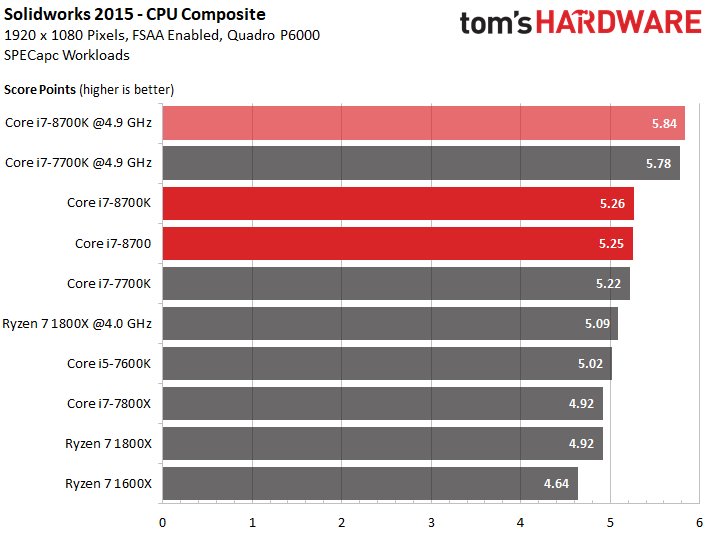
At Creo, the pure clock counts as long as 8 threads can run stress-free. Otherwise, the new Core i7-8700K can hardly take advantage of the two additional cores.
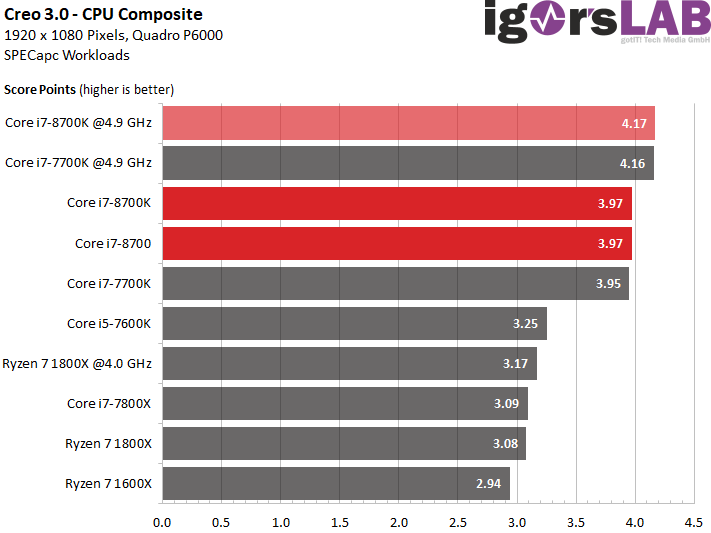
At 3ds Max, the clock and core count, whereby the core i7-8700K can set itself off slightly from the core i7-7700K. The Core i7-7800X is not competitive here either.
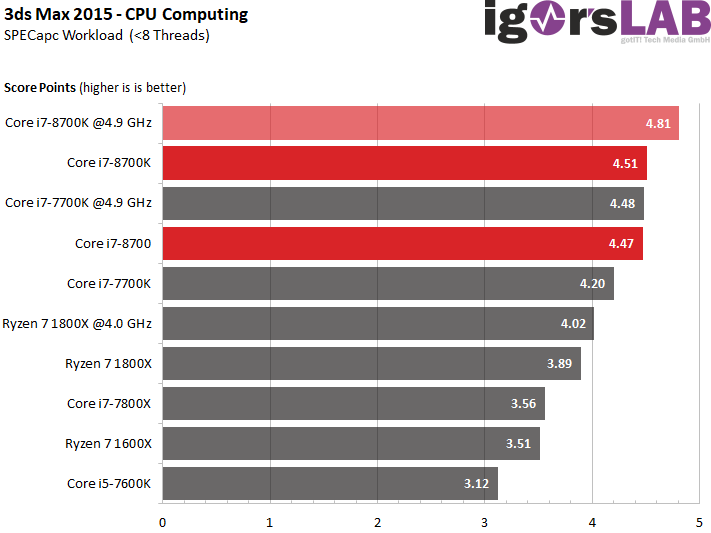
In the CPU composite, on the other hand, extensive rendering is also included (which we will come to separately) so that the overall rating of the AMD Ryzen 7 provides a slightly different picture.
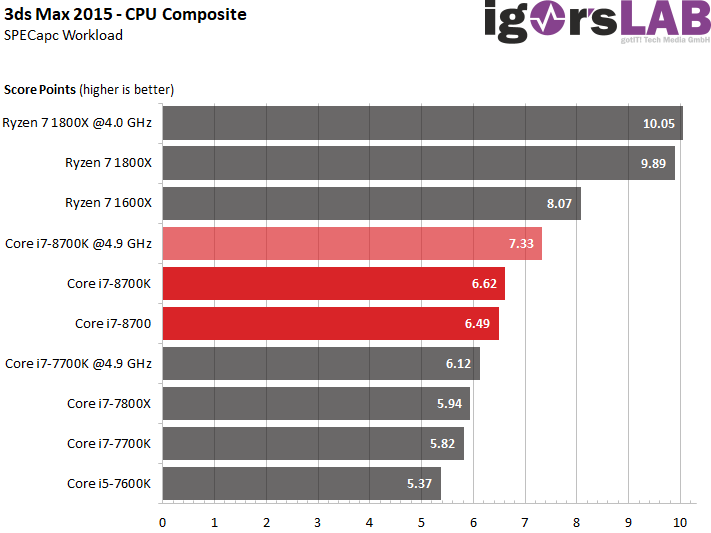
CPU Performance: Photorealistic Rendering
In final rendering, it is no longer so much universality that matters, but the most efficient and fast, parallelized processing. That's why we're looking at this section now. So let's get back to 3ds Max right at the beginning. When it comes to pure rendering, no one is fooling the Core i7-8700K in its class. Core count goes ahead with clock, although the performance with the latter also scales beautifully.
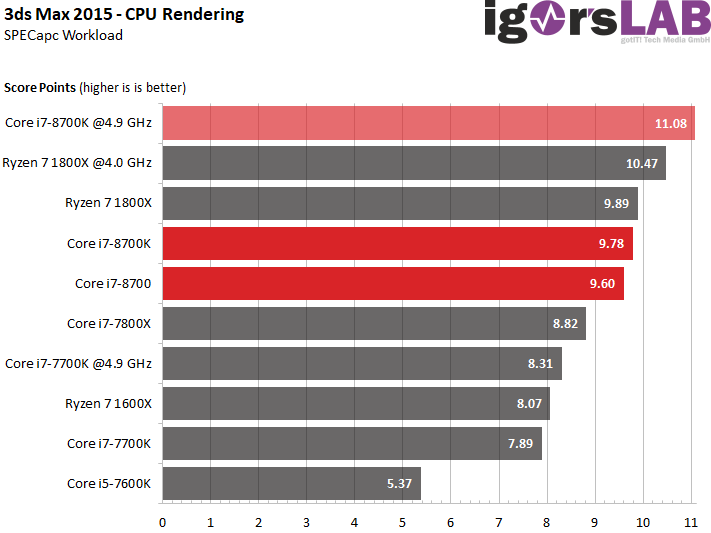
The console variant of Luxrender confirms this image, whereby at least the Core i7-8700K can compete with the Ryzen 7 1800X.
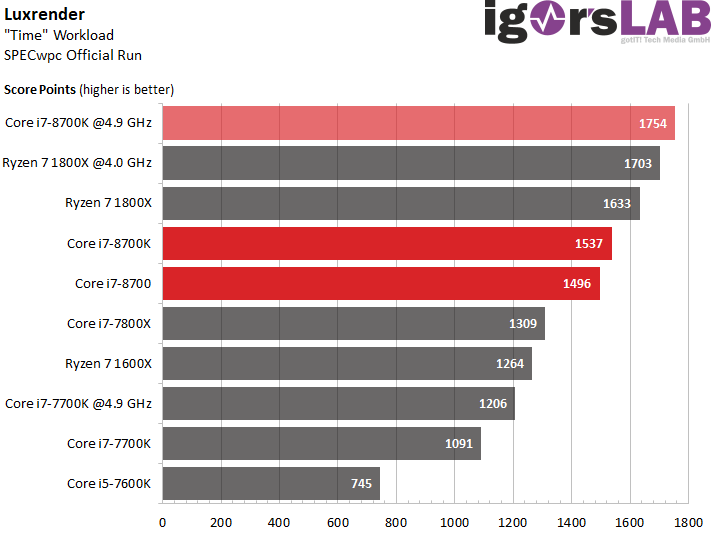
Let us now turn to Blender. The usual workload (but with a sample size of 200 pixels) confirms the image of the previous tests very impressively. The Core i7-8700K is roughly at the level of the Ryzen 7 1800X, depending on the clock. The two older Kaby Lake CPUs no longer see a trick here. Gaming isn't everything.
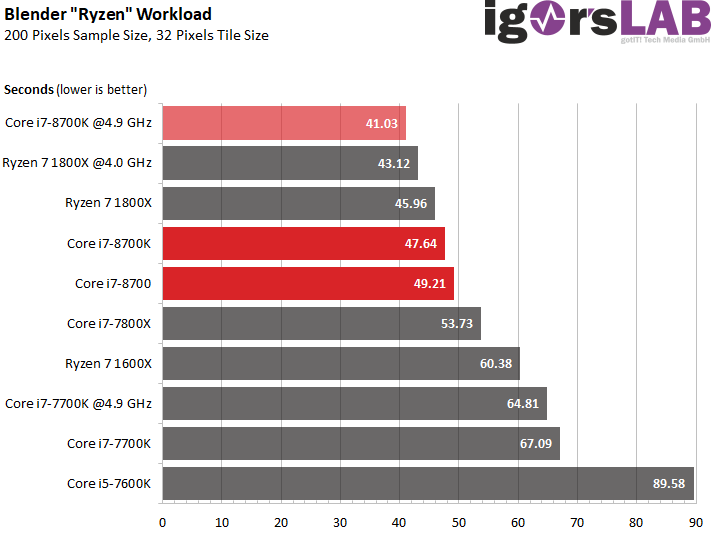
If we run the blender loop of the SPECwpc, the result looks very similar, even if the task is somewhat different.
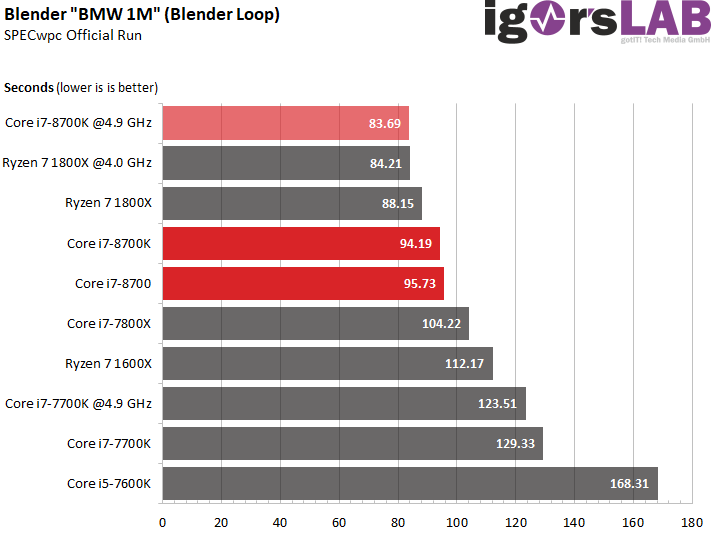
If the share of pure rendering power continues to decrease, the non-overclocked Core i7-8700K will also push to the top. The rest looks like it was.
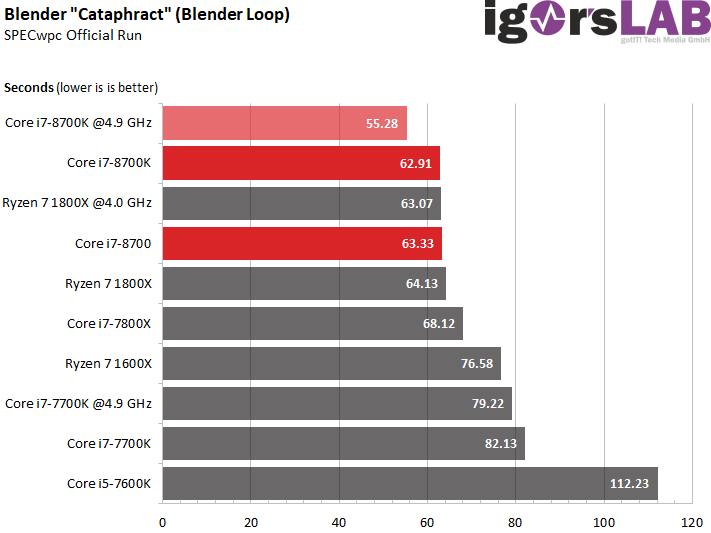
This becomes even clearer when one not only confines oneday to photorealistic image output, but also plays a role in the loop many factors, in which not only the core number is the only decisive factor, but also the IPC. Suddenly, the older four-cores with SMT are back at the front.
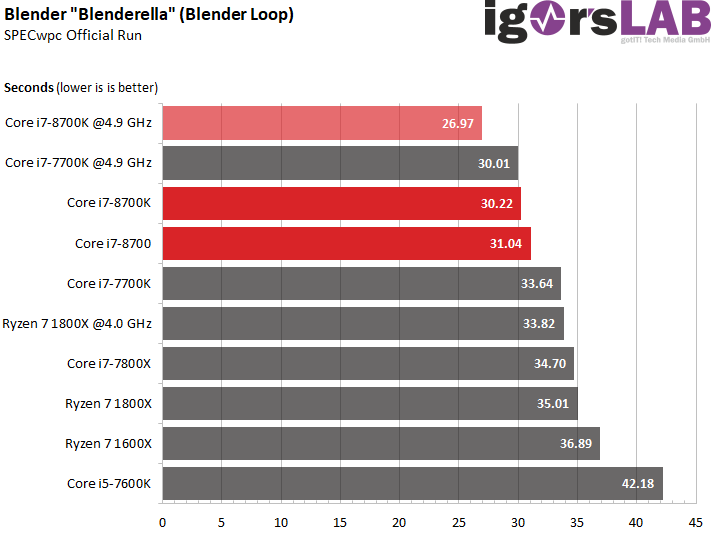
In this part, the two new Intel CPUs finally push themselves to the top, since the core number is not unimportant, but the clock is even more important.
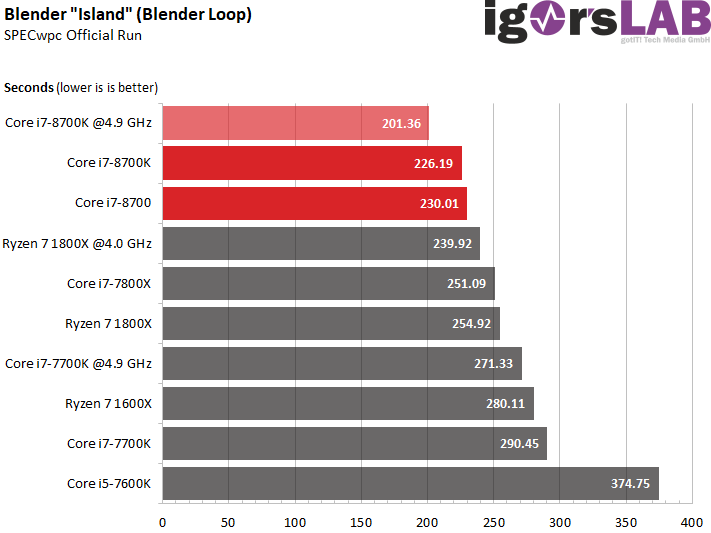
Intermediate conclusion
Intel's Core i7-8700K and the Core i7-8700 are also useful CPUs in semi-professional use and not only in gaming. Depending on where you set the priorities, they can either keep up with the production or even pull the sausage off the plate for everyone else. We would not have expected such a positive assessment of Intel's consumer rail, especially compared to the Core i7-7800X. This makes the Core i7-7800X completely obsolete.
- 1 - Einführung und Test-Setup
- 2 - Chipsatz, Mainboard und Test-Setup
- 3 - 3DMark, VRMark, Civilization AI Test
- 4 - Ashes of the Singularity: Escalation
- 5 - Battlefield 1
- 6 - Civilization IV
- 7 - Warhammer 40K: Dawn of War III
- 8 - Project Cars
- 9 - Far Cry Primals
- 10 - Hitman (2016)
- 11 - Rise of the Tomb Raider
- 12 - DTP, Office, Multimedia und Kompression
- 13 - Workstation 2D- und 3D-Performance
- 14 - CPU-Computing und Rendering
- 15 - Wissenschaftlich-technische Berechnungen und HPC
- 16 - Übertaktung, Leistungsaufnahme, Temperaturen
- 17 - Zusammenfassung und Fazit
































Kommentieren